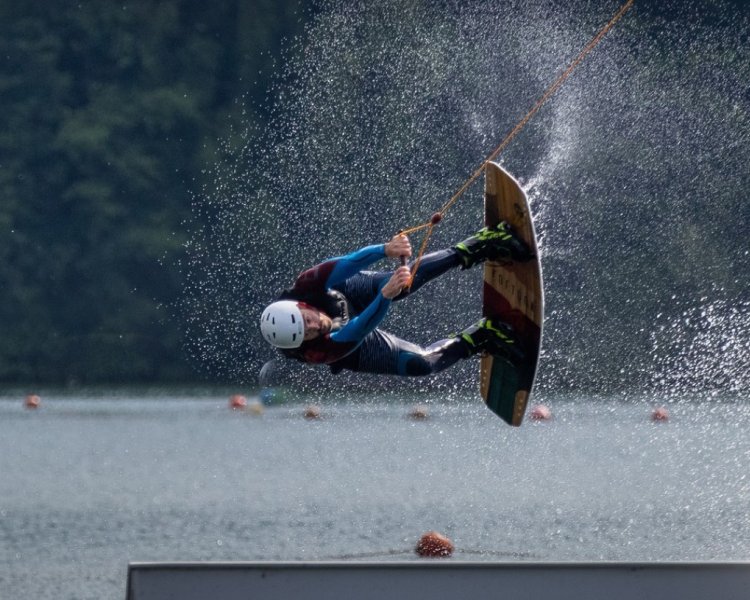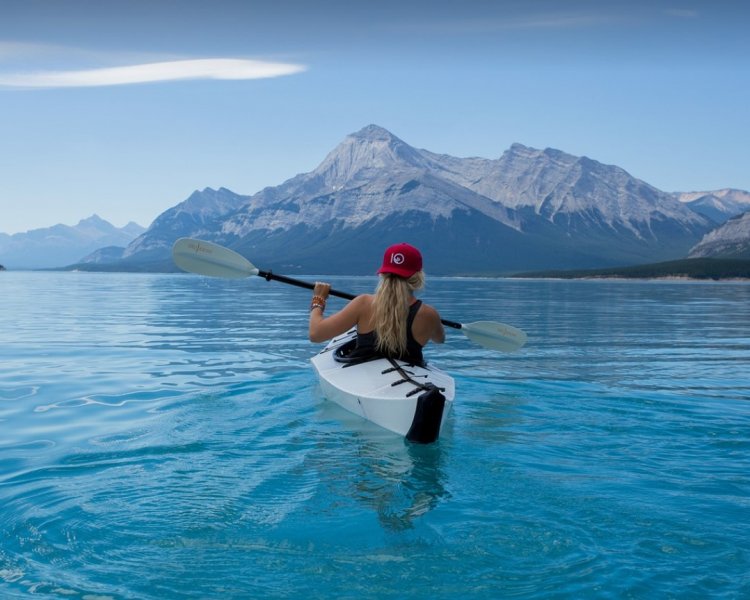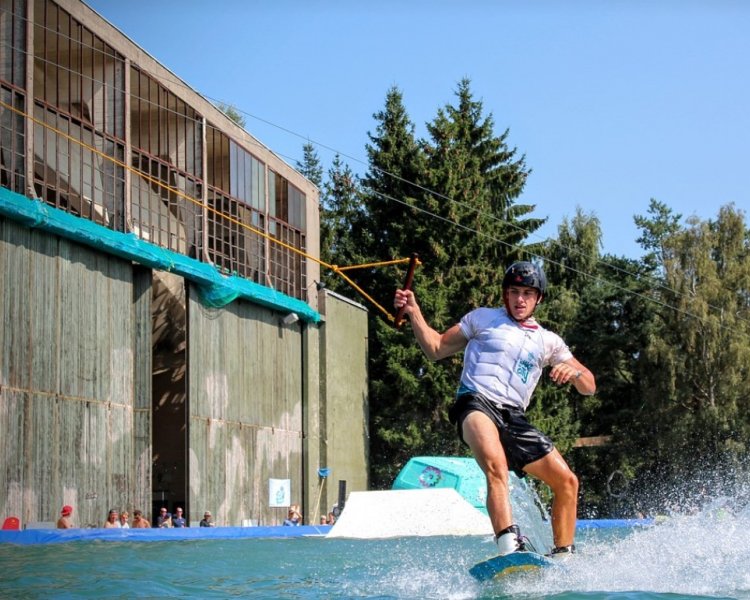Why Is It Called Wakeboarding? The History Of Wakeboarding

Wakeboarding is the ultimate surfer’s crowd pleaser. This creative sport can best be defined as a combination of surfing and jet skiing which is exactly how it received its name.
In a dire situation, a simple complication became responsible for the infamous sport of wakeboarding, which was only founded in the last 50 years.
Why is it called Wakeboarding? The history of wakeboarding is rapidly developing in a short time from being unheard of to one of the world’s top extreme water sport with over 3 million Americans a year actively enjoying it. The sport was discovered in 1985 while a surfer named Tony Finn found himself tired of attempting to surf against calm and useless waves.
Some of the best ideas known to man were thought up because of challenged placed in front of humanity. Wakeboarding is no exception. Tony Finn was annoyed with waters he was unable to surf properly on and instead of complaining, he took action.
Read Also: Is Wakeboarding Dangerous?
So, Why Is It Called Wakeboarding?
The sport, in case you don’t have a clear picture of it, is the sport in which a rider stands on a board resembling a surfboard while being towed by a motorboat.
Often, it is practiced on a lake but also in the ocean in deeper waters which may not have as consistent or rideable of waves for a surfer.
Usually, the rider is towed by rope, but many professionals use cable systems or other motored vehicles.
From humble beginnings the sport has quickly become listed in the world Top Water Sports by many publications and is far surpassing the ancient sports of fishing or diving.
The name wakeboarding has changed many times and evolved in the short time since its emergence in 1985. When it was invented, it was an alternative to surfing so they could enjoy the sport any day of the year.
In fact - Tony Finn initially named his creation, ‘Skurfer,’ because it was the combination of jet-skiing and surfing.
He was creating an official board by the 1990s and developing a neutral-buoyancy wakeboard which would help the surfer do more tricks, flips, and turns.
Perhaps it was because the word Skurfer sounds like a sound your shoes might make against squeaky floors, or perhaps that it sounds like an insult, (for example, “she’s such a skurf!”). Or perhaps it’s that the term just kind of sounds like Skunk… No matter the reason - the name never took off.
Wakeboarding sounded much cooler to kids and to the advertisers and sponsors alike. Eventually, the name evolved by promoters adding a catchier feeling to it.
We can’t argue because sales took off and the sport because almost instantly renowned until the Skurfer was a thing of the past.
The History of Wakeboarding
When humans are faced with a challenge, I deeply believe - this is where our best ideas come from.
We were in the dark, we created electricity. We kept having our food decay early, so we invented refrigeration to preserve our nutrients. Tony Finn couldn’t surf on the peaceful lake waves, he dreamt up Wakeboarding.
After being dreamt up in the mid 1980’s, business was in full swing by the 1990’s, and everyone took notice of the phenomena known as “wakeboarding.”
The board was a real highlight of what separated the sport from surfing. It’s smaller and easier to do flips on. The professionals in wakeboarding consider themselves much cooler than the athletes in surfing, but it goes both ways.
Being lighter and more buoyant on the water is a huge part of the sport’s success. The board was formulated by engineers and athletic developers to resist the surface of the water in a unique way.
In the 1990s, the O’Brien company introduced a board called the Hyperlight Board.
This was the first created of its kind to resist deeper water and retain buoyancy far beyond the capability of earlier models. The Hyperlite Board grew through the market and still shows success today in sales.
Read Also: Is Wakeboarding Dangerous?
Changes Since the 1980s
The board’s adapted slightly since the 1990s and in the last decade has become more curved. This, as they’ve discovered, results in a smoother ride which bounces off the incoming waves from the vehicle driving you.
There was also the later addition of dimples in the back of it for better hydrodynamics. This helped break the water’s friction and cause fewer crashes as well.
Another man found himself wanting to make improvements to the board in the late 1990s. Jimmy Redmon was the second person to try adjusting the board, this time adding foot handles to lock your feet more securely into place.
It was more symmetrical and became closer to resembling the surfboard as earlier models had. They’d gotten away from the point, but Redmon helped them find it again. This became the standard shape of the sport and is still used today.
Right about the time there was a new millennium, the sport went professional and started being noticed by private companies. Reaching ESPN, the sport was added to the global series.
The Vans Triple Crown of Wakeboard and the Wakeboard World Cup all emerged in the year 2000. Athletes and professionals started getting fancy with it, adding ramps and obstacles to complicate the sporting ground (or lack of ground in this case).
With all of these changes, additions, improvements, renaming, rebranding, etc. – The wakeboard is a sport that appears to be on the upswing!
This unique premise is seeing great success after combining the best of both worlds in surfing and jet-skiing.
Wakeboarding has come a long way in a short time to now being in National Competitions with professional wakeboarders making six figures and an entire niche within the sporting industry.
Some of the most popular places you can see wakeboard include the Freestyle Wakeboarding, X-games, and at many waterboard parks.
Part of the reason that Finn and Redmon were able to make this sport such a large success in a short amount of time is because they were able to build off of water lovers that were already enjoying surfing and skiing. A true stroke of brilliance for any business owner – they created something new from something people already loved.
Final Thoughts
This ever-evolving sport is full of tricks and turns that makes it fun for all ages! You can just ride on a board and be pulled around if you want a calmer way to see the sights or spice it up with tricks and flips.
Wiping out is half the fun, so this is truly a great sport for the whole family.
Wakeboarding is the future and remaining steady from around 3.05 million participants in 2005, with slight change of 3.01 in 2017.
Everything in between those 12 years has been on the higher points of fluctuation, and statistically, the sport is very steady in its growth.
Since the sport is not going anywhere, try it out for yourself! Let us know what you think of your wakeboarding adventure and if you’re a professional, a first timer, a natural fan, or an absolute cynic of the sport.
Regardless, we’d love to hear your thoughts and wish you a happy day of chasing waves!
...



